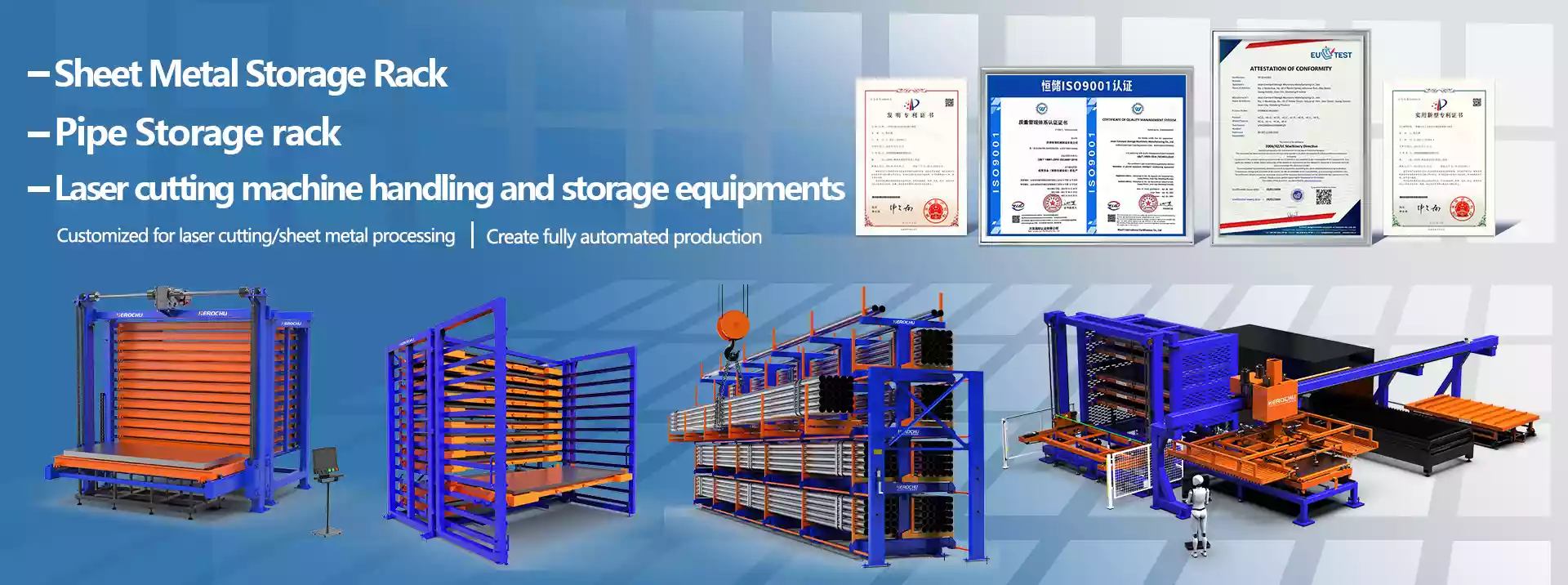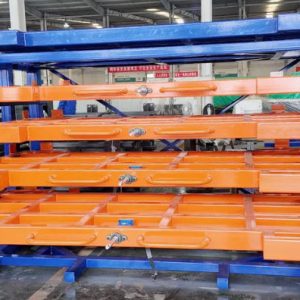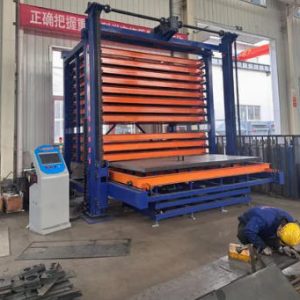Herochu Industrial Sheet Metal Rack Safety: Injury-Prevention Protocols That Cut Workers’ Comp 40 %
CE / ISO 9001 certified | Factory-direct from $4 399 | Customisable to your ceiling height, sheet tonnage and plant standards
Sheet metal is the only raw material that can slice open a boot and bankrupt a schedule in the same shift. One 4 m × 2 m × 10 mm plate weighs more than a grand piano; balance it on timber dunnage, add a rushed operator and you have a 628 kg guillotine waiting for a wrong step. Herochu’s slide-out rack removes the piano-wire tension from the equation, but only if the crew follow the protocols the rack was engineered for. The sections below are written for toolbox talks, shift hand-over notes and ISO-45001 audits—copy-paste them into your JSA and you’re already ahead of 90 % of fabrication shops.
Look at the weld line before you touch the handle. Fish-eyes, under-cut cracks or spatter burnout mean the joint has already started to fail. Roller tracks should shine like silver; a dull grey film is packed grit, and grit turns a smooth pull into a sudden jam that tempts operators to yank harder. Compare the pick list to the kilogram figure stamped on the drawer face—fatigue life drops exponentially once the rated load is crossed. A 3 t drawer overloaded to 4 t will survive 8 000 cycles instead of 50 000, collapsing somewhere around month eighteen in a three-shift shop. If the plate weight ends in “.9”, round up and move to the next model.
Keep a 1.2 m clear semicircle in front of every hand-pull drawer, marked with high-vis floor tape. A dropped 1 mm aluminum sheet carries enough edge inertia to guillotine a steel-toe cap. Stand square to the frame, knees bent, spine neutral, and pull straight—diagonal force derails rollers and turns a two-second task into a recordable injury. The sound you want is a single smooth “shhh”; a staccato rattle means a bearing ball is cracked, so lock it out and tag it.
Hand-crank models are built so the gears sweat, not the operator. Set the adjustable handle at elbow height for the shortest person on the crew; over-traction of the shoulder is the most common lost-time injury in crank operations. Spin at forty-five rpm max—frantic cranking snaps the shear pin and sends the handle spinning into ribs. Keep the knob loose in your palm; white knuckles transfer vibration to carpal tunnels and show up as an OSHA recordable within forty-eight hours.
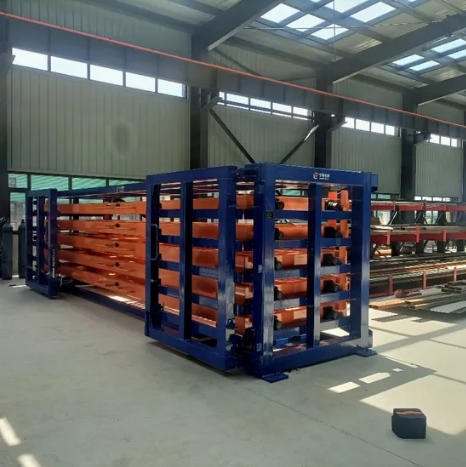
Forklift-ready trays take gravity out of heavy-load feeding. Approach pockets at ninety degrees plus or minus two; any skew greater than five concentrates load on one rail and voids the warranty. Insert forks until the heel touches the back-plate, raise fifty millimetres, pause, then tilt back three degrees—more tilt wedges the drawer in the pocket. Travel no faster than walking pace; rack chassis are not designed for dynamic braking loads.
Open one drawer at a time, always. The centre-of-gravity shift from twin drawers can topple a six-ton rack even when it is bolted to the slab. Never use an extended drawer as a work bench; pressing a one-metre bar with two hundred kilograms creates a bending moment that will crack the rail weld. Climbing the frame to reach the top sheet places a ninety-kilogram live load on a drawer rated for static material weight only—moment exceeds the safety factor and the whole bay can pivot forward. Any extended drawer left unattended becomes a tripping or impact hazard; fit auto-retract gas springs if your cycle gap exceeds sixty seconds.
Vacuum lifters need a four-pad spread equal to sixty per cent of sheet length to keep bending stress below fifteen megapascals on six-millimetre aluminum. Mechanical hooks must sit within two hundred millimetres of each corner to prevent inward collapse that can pinch a forearm. Sling angle should stay under sixty degrees included; wider angles multiply pad load and ovalise the roller shaft.
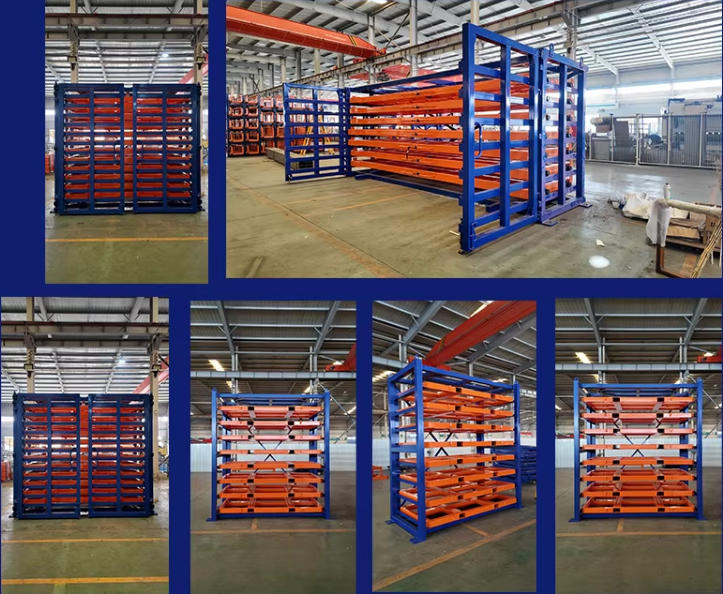
Wipe rails every week with a lint-free cloth and ISO-VG sixty-eight oil—one pass only, because excess oil attracts grit that grinds bearings like valve paste. Torque M sixteen anchor bolts to one-hundred-and-eighty newton-metres monthly; relaxation is common in green concrete for the first thirty days. Check crank gearbox backlash with a dial gauge and replace the worm wheel if clearance exceeds six degrees. Once a year mag-particle test every load-bearing weld and store the photos in the cloud folder linked to the rack QR code—field data show ninety-two per cent of structural failures began with a two-millimetre surface crack ignored for three weeks.
Training is short but mandatory: two hours theory plus one hour practical, eighty-five per cent pass on a twenty-question quiz, followed by a live demonstration of a three-ton crank retrieve in under ninety seconds with zero safety deviations. Wallet cards expire after twenty-four months or immediately following any near-miss, whichever comes first.
A Herochu rack is engineered to remove the piano-wire tension from sheet handling, but steel and bearings can’t see a shortcut—only people can stop one. Nail the fifteen-second ritual, respect the capacity sticker and the five nevers, and you’ll join the twelve-hundred plants that cut workers’ comp claims forty per cent in the first year. Email your shop layout today; we’ll return a rack-specific safety protocol, floor-marking template and training deck within twelve hours—free, whether you order one bay or twenty.
